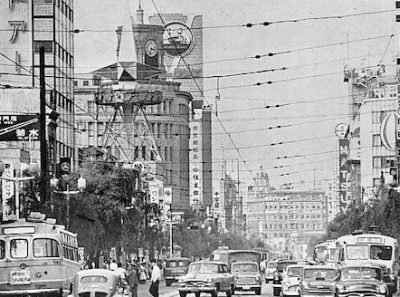Japan and Nikkei: Growing Gap between Rich and Poor (Debt Ridden)
Kanako Mita, Sawako Utsumi, and Lee Jay Walker
Modern Tokyo Times

The coronation of Sanae Takaichi as the newly elected leader of the Liberal Democratic Party (LDP)—and Japan’s imminent next prime minister—has already sent ripples through the corridors of finance. The capitalists are salivating. They await her economic stimulus packages like wolves at the scent of blood, eager to ride yet another wave of asset inflation. The Nikkei swells, inflated by a weakened yen and market distortions that reek of backdoor interventions and orchestrated euphoria.
But beneath the glimmering facade of stock market highs lies a festering reality. The working poor, part-time workers, and the growing class of precarious laborers remain invisible in the economic narrative. They see no bonuses, no dividends, no share of the speculative spoils. Even the once-stable lower middle class now feels the crush of surging prices—groceries, rent, utilities—turning modest wage increases into illusions. The cost of living rises like a tide, submerging hopes as fast as they’re raised.
And yet, the playbook remains unchanged. Takaichi, a loyal disciple of the late Shinzo Abe—whose shocking assassination still echoes in the nation’s psyche—is poised to double down on the old formula: cheap borrowing, aggressive fiscal stimulus, and trickle-down fantasies. Abenomics 2.0 may thrill the markets, but it risks leaving ordinary citizens further behind, fueling easy profits for the few while the many tighten their belts.
If Japan continues down this path unchecked, the consequences could be combustible. Rising immigration amid a demographic collapse, deepening economic inequality, and a public increasingly aware of the growing gap between policy rhetoric and lived reality—these are the ingredients for social convulsions. The warning signs are there. Whether anyone in power chooses to see them is another matter.
Japan’s minimum wage doesn’t resemble a G7 nation. It echoes something far more sobering: an advanced economy increasingly reliant on cheap labor to prop up a hollowed-out system. And nowhere is this more evident than in the shameful disparities laid bare by the current wage structure and the weakened yen — a damning symbol of the fiscal mismanagement under the ruling Liberal Democratic Party (LDP), especially in the wake of Fumio Kishida’s tenure.
In Tokyo—Japan’s gleaming capital—the minimum hourly wage stands at ¥1,163, or a pitiful £5.80 at current exchange rates between Japan and the UK. Sadly, in Fukushima, that drops to an appalling ¥955—barely £4.78.
To put this in perspective: the UK’s national minimum wage for anyone aged 21 and over is £12.21—more than double Tokyo’s rate and rendering Fukushima’s (and other poorer prefectures) resembling a non G7 nation. Worse still, basic food items are often cheaper in the UK than in Japan, meaning Japan is not just a low-wage economy—it’s a low-wage, high-cost trap for its working poor and fragile middle class.
And it doesn’t stop there. In Japan, every trip to the supermarket is taxed. Regardless of your income—whether you’re scraping by on hourly shifts or raking in millions—the 10% consumption tax is also hurting people (a lower rate of 8% applies to food and beverages) . That’s right: the poorest pay the same rate on food as billionaires. And with the price of fruit and other staples often exorbitantly high, the strain is relentless.
Meanwhile, the LDP continues to court the ultra-wealthy and speculators—massaging the stock market, inflating asset bubbles, and celebrating corporate gains as if they reflect national well-being. The Nikkei surges, but for whom? The answer is clear: not for the convenience store worker in Sapporo, not for the delivery driver in Osaka, and certainly not for the young family in Sendai struggling to afford groceries.
Japan’s ageing population isn’t retiring — it’s working overtime. Haunted by pension insecurity and burdened by a high cost of living, more than 33% of Japanese citizens aged 70 to 74 remain in the workforce, many out of necessity rather than choice. Among those aged 65 to 69, the figure is even more staggering — over 50% are still clocking in, day after day, in a country that offers little relief to those who’ve already paid their dues.
This isn’t active ageing by design. It’s economic survival.
Despite being the world’s third-largest economy, Japan ranks a dismal 24th out of 35 major nations in average wages, according to the OECD’s 2021 data — a damning indictment of its failure to convert industrial strength into broad-based prosperity.
The message is clear: retirement is a luxury fewer and fewer can afford. And in the shadows of glittering stock markets and booming corporate profits, an older generation toils on — quietly propping up a system that too often leaves them behind.
The dignity of Japan’s working poor — and especially its elderly, who should be honored in retirement, not forced to hustle through old age — is being quietly eroded. Meanwhile, speculative capital rides high on a stock market buoyed by ultra-loose monetary policy, corporate favoritism, and a weak yen that fuels exports but punishes domestic consumption.
It’s a system that increasingly rewards wealth over work.

Modern Tokyo News is part of the Modern Tokyo Times group
http://moderntokyotimes.com Modern Tokyo Times – International News and Japan News
http://sawakoart.com – Sawako Utsumi and her website – Modern Tokyo Times artist
https://moderntokyonews.com Modern Tokyo News – Tokyo News and International News
PLEASE JOIN ON TWITTER
https://twitter.com/MTT_News Modern Tokyo Times
PLEASE JOIN ON FACEBOOK
http://facebook.com/moderntokyotimes